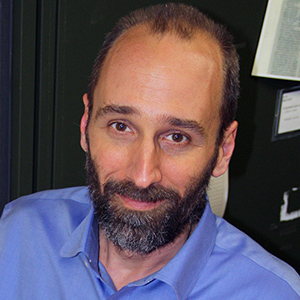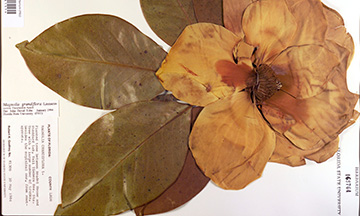
Department of Biological Science.
In the 10 years Austin Mast has been director of Florida State University’s herbarium, his staff has digitized about 76,000 of the university’s 210,000 plant specimens.
Using crowdsourcing, that same amount of digitization was accomplished in 10 days.
“Making it fun and easy and putting the task online is the only way we are going to produce the data we need for urgent research on biotic responses to climate change, extinctions and invasive species,” Mast said.
“The more people we can engage, the faster we can build a high resolution baseline for understanding current diversity and projecting future change.”
Becoming a part of that engaged group is simple. Visit the website Notes from Nature, a crowdsourcing project that aims to enable transcription of specimen labels and ledgers from the world’s 3 billion biodiversity research specimens.
Currently featured on the site are 21,000 specimen images from Florida State’s Robert K. Godfrey Herbarium and Valdosta State University’s Herbarium.

Mast, an associate professor in Florida State’s Department of Biological Science, also sits on Notes from Nature’s steering committee. Digitizing specimens is an ongoing effort, he noted.
“Of the United States’ 1 billion specimens, about 10 percent are digitized — that’s a huge amount of data stuck in cabinets,” Mast said.
These specimens are stored in natural history museums, universities and other safe places, available to the larger research community only when they visit the collections or request short-term loans of specimens and thus not living up to their full potential as valuable data.
These specimens are stored in natural history museums, universities and other safe places, available to the larger research community only when they visit the collections or request short-term loans of specimens and thus not living up to their full potential as valuable data.
The crowd — anyone with a computer, Internet connection and an interest in transcribing — can visit Notes from Nature and learn about diverse plants, many growing in their own backyards.
“The panhandle of Florida is a biotic hotspot, and our specimens document that diversity. We need that data to understand diversity in the national forest, our state, county and city parks, the wildlife refuge, and everywhere else in the region,” Mast said.

Mast’s drive also stems from his leadership of the public participation working group of iDigBio, the National Science Foundation’s NationalResource for Advancing Digitization of BiodiversityCollections.
iDigBio, based at Florida State and University of Florida, is facilitating digitization, data mobilization, specimen-based research, education and outreach at more than 150 institutions in the United States. These represent every state in the nation and two U.S. territories.
There are more than 4,800 users transcribing specimens on Notes from Nature. Several other types of specimens are featured in addition to plants. For example, Calbug is an effort to digitize terrestrial arthropod-specimen records with a focus on California.
A great number of people do between one and five transcriptions, Mast said. Others contribute hundreds. The average time it takes to complete transcription of one specimen is about 3 minutes.
As for the accuracy of the crowd?
“It’s good,” Mast said. “Error rates are surprisingly close to what we get with our in-house technicians.”
Mast encourages both individuals and groups to get involved in transcribing specimens.
“Public engagement in science has got to be a growth area for the scientific community,” he said. “A lot of our decisions could be smarter with this scale of data, and it opens the lab door a bit more to the public, leading to a deeper understanding of the process.”




